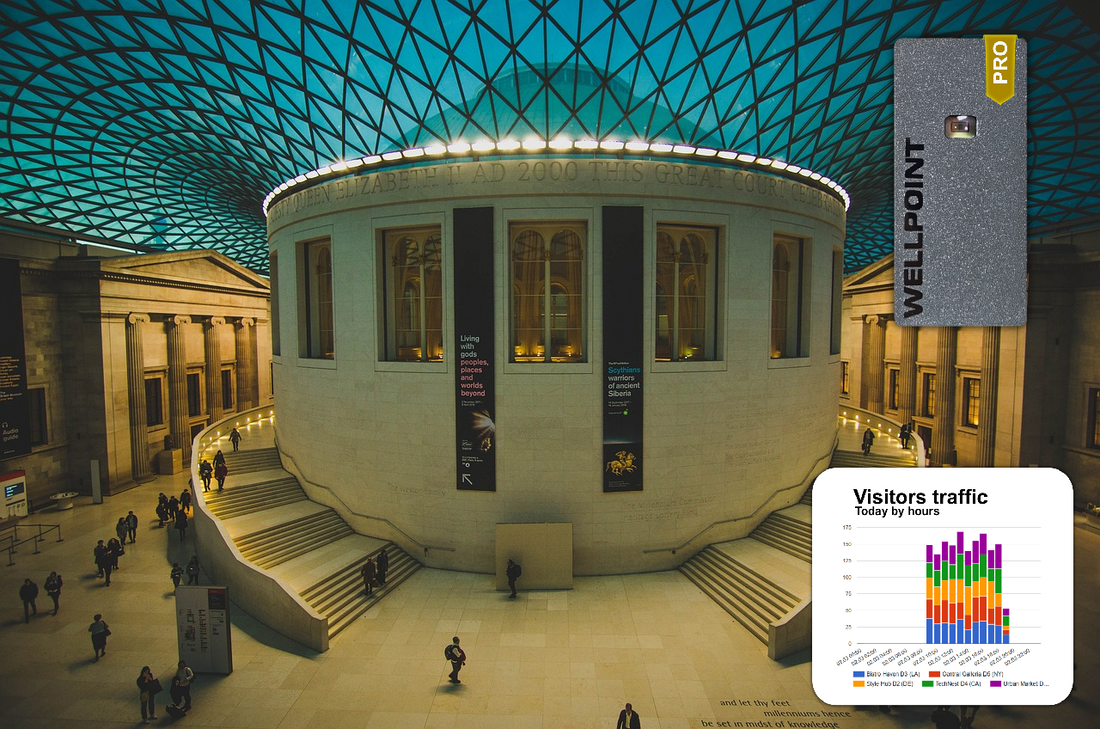
From Footfall to Funding: How Museums Use Visitor Analytics to Secure Grants
For any museum or gallery, securing funding is the lifeblood that supports new exhibits, educational programs, and community outreach. Yet, in an increasingly competitive landscape, grant applications and stakeholder presentations demand more than just a compelling narrative; they require cold, hard proof of impact. This is where visitor analytics, powered by people counting technology, transforms from an operational tool into a vital fundraising asset.
At Wellpoint, we help cultural institutions tell their story with data. By moving beyond simple ticket stubs to rich, detailed analytics, you can build an undeniable case for your value. Here’s how.
1. Quantify Your Community Impact with Precision
Grant-making bodies and private donors want to know exactly who they are supporting. Instead of providing vague estimates, imagine presenting a report that details your precise visitor numbers by day, week, and month. Wellpoint allows you to say, "We served 50,000 visitors last year, with a 20% increase during our summer program." This level of precision immediately establishes credibility and demonstrates a clear, quantifiable reach into the community.
2. Prove the ROI of Your Programs and Exhibits
Did your latest interactive exhibit successfully draw in a younger demographic? Did your new marketing campaign lead to a measurable spike in weekend attendance? Visitor analytics provide the evidence. By comparing footfall data before and after a specific initiative, you can prove its success and demonstrate a direct return on investment. Presenting a chart that shows a 30% increase in dwell time at a newly funded exhibit is far more powerful than anecdotal feedback alone.
3. Justify Requests for Operational and Capital Support
Whether you’re asking for funding to expand a gallery or support for increased staffing, data is your best ally. Occupancy analytics can show that certain areas are consistently at or over capacity, proving the need for physical expansion. Similarly, identifying consistent peak traffic hours can justify the need for additional security or docent staff. This data-driven approach transforms a request from a "want" into a demonstrated "need."
4. Forecast Future Growth and Set Realistic Goals
Funders are not just investing in your past; they are investing in your future. Historical visitor data allows you to forecast attendance trends with a high degree of accuracy. By presenting realistic, data-backed growth projections, you show stakeholders that you have a clear vision and a strategic plan for the future. This builds confidence and makes them more likely to invest in your long-term success.
Build a Stronger Case for Your Mission
In the world of fundraising, a story backed by data is a story that gets heard. Wellpoint provides the simple, reliable tools you need to collect that data and weave it into every grant application, donor presentation, and annual report.
Ready to turn your visitor numbers into your most persuasive fundraising tool? Try our interactive DEMO at wellpoint.cloud and discover the data that delivers.
#PeopleCounter #Wellpoint #Museums #GrantWriting #VisitorAnalytics #Fundraising
